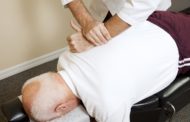During my first two years in college, I moved every semester before I landed a long-term lease off campus. It was tedious and inconvenient but it had to be done while I lived in the dorms. In my second move, the box spring for my bed had become damaged in the moving process. One of the boards in the box spring had broken, which caused a divot in the center of the box. I didn’t think nothing of it at the time. After a few weeks in the new room with my damaged bed, my lower back began hurting. I thought it was because of incorrect workout techniques, so I changed my routine, but that wasn’t it. Then I thought it was my posture as I sat in my seat in my car or in class, so I paid more attention to how I was sitting, but that wasn’t it either. I was still in pain.
That’s when I went to the chiropractor to seek treatment for my lower back pain. My chiropractor and I discussed my daily routine and all the areas that may be causing stress to that region of my back. Everything seemed normal. Then he asked me about my bed and how long I had it. I had bought the bed a year before I started college and moved into the dorms. He didn’t think it was the bed either. Then I jokingly told him about my clumsiness and how I had damaged box spring. That caught his attention.
He quickly turned to me and asked, “Does your bed look weird now? After you damaged it, did it look different? Is it deformed in any way?”
I thought he was a profit. “Yes,” I replied, “how did you know? It has a dip in the middle of it where the board is broken.”
“Do yourself a favor and go buy a new bed or a new box spring today,” he said.
“Why?” I was confused. What does a divot in my bed have anything to do with my back pain?
“Well,” he answered without skipping a beat, “that slope in your bed sounds like it is causing your pain. Your body is not aligned when you fall asleep. Your spine is bending with the slope, particularly, in the lumbar region of your back, which is your lower back. Have you ever fallen asleep in an awkward position and woken up with a stiff neck?”
“Yeah, that happens all the time when I fall asleep at my desk when I’m studying,” I said laughing. I was starting to understand.
“The same thing is happening here, except, it is happening in your lower back.” He paused quickly and brought over a small, plastic model of the spine. “That slope is causing your lower back to flex constantly, which looks like this.” He bent the model to one side, causing the vertebrae of the model to touch each other. “If the slope wasn’t in your bed, your lower back would look like this, given that you sleep with your spine aligned.” He pulled the model back up and the vertebrae were no longer touching each other.
After a thorough explanation of my lower back and the bones and muscles involved, he adjusted my back to help relieve some of the stress in the lumbago region. Then he showed me a few stretches to do while I was at home that would also help. I left his office enlightened.
I did as he suggested and went out and spent $100 on a new box spring after leaving his office. A few days later, my pain was less and in a week, it was gone. Now I know what it means to have good sleeping posture and the importance of having a good bed to sleep on.
According to some of the leading mattress companies, it is recommended to replace a mattress every 7-10 years. Also, the American Chiropractic Association (ACA) recommends that the firmness of the mattress should be medium so that it can “minimize any curve in your spine” (acatoday.org, 2017).
Here are a few tips on proper lying position from the American Chiropractic Association that may help you sleep better:
- Find the mattress that is right for you. While a firm mattress is generally recommended, some people find that softer mattresses reduce their back pain. Your comfort is important.
- Sleep with a pillow. Special pillows are available to help with postural problems resulting from a poor sleeping position.
- Avoid sleeping on your stomach.
- Sleeping on your side or back is more often helpful for back pain. If you sleep on your side, place a pillow between your legs. If you sleep on your back, keep a pillow under your knees.
If you are experiencing back pain and believe that it could be a result of your mattress or sleeping position, don’t hesitate to reach out to your local chiropractor for an adjustment.
Reference: “Tips to Maintain Good Posture.” Posture. American Chiropractic Association., 6 Jan. 2016. Web. 20 June 2017. https://acatoday.org/content/posture-power-how-to-correct-your-body-alignment.









